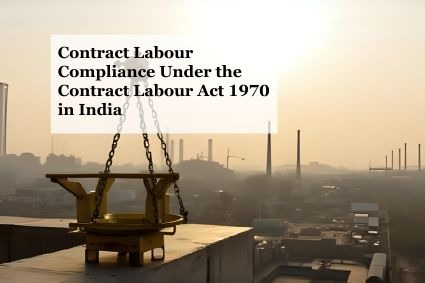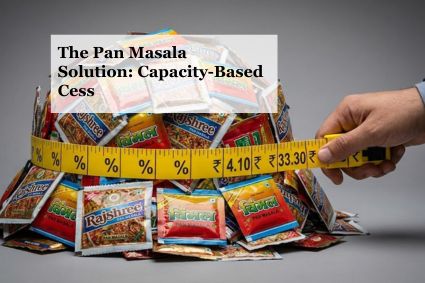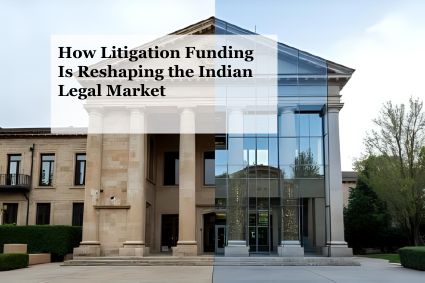W&B Website Blog Research – Litigation Process in India
Overview & Context
India’s Legal Landscape
India follows a common law legal system, influenced by English law but adapted to its constitutional framework. Litigation forms the backbone of dispute resolution in India, covering civil disputes (private rights and obligations) and criminal matters (offences against the State).
The judicial system is facing structural challenges, particularly high pendency of cases. Reforms such as the Commercial Courts Act, 2015, amendments to the Arbitration and Conciliation Act, 1996, the Insolvency and Bankruptcy Code, 2016 (IBC), and settlement initiatives like the Vivad se Vishwas II scheme aim to streamline resolution processes and reduce delays
There are 2 types of Litigation: Civil Litigation & Criminal Litigation.
Civil Litigation:
- Concerns enforcement of private rights and obligations (contracts, property, family, corporate, consumer disputes).
- Governed primarily by the Code of Civil Procedure, 1908 (CPC), Indian Evidence Act, 1872, Specific Relief Act, 1963, and subject-specific statutes.
Criminal Litigation:
- Involves prosecution of offences against society and the State.
- Governed by the Bharatiya Nyaya Sanhita, 2023 (BNS), Bharatiya Nagarik Suraksha Sanhita, 2023 (BNSS) (procedural law), and Bharatiya Sakshya Adhiniyam, 2023 (evidence).
Structure of Indian Judicial System
- Supreme Court of India: Apex court; exercises original, appellate, and advisory jurisdiction under Articles 32, 131, 132–136, and 143 of the Constitution.
- High Courts: Each state (or group of states) has a High Court. They exercise appellate jurisdiction and, in some cases, original jurisdiction (e.g., writ petitions under Article 226, company matters, admiralty jurisdiction).
- District and Subordinate Courts: Handle civil and criminal cases at the first instance.
- Specialized Courts/Tribunals: Established for sector-specific matters such as:
- NCLT / NCLAT – Corporate and insolvency matters under IBC.
- DRT / DRAT – Debt recovery.
- SEBI / SAT – Securities disputes.
- CCI – Competition law.
- NGT – Environmental disputes.
- RERA – Real estate regulation.
- Commercial Courts – Disputes above INR 3,00,000.
Jurisdictional Framework
- Territorial Jurisdiction: Based on the defendant’s residence or where the cause of action arises.
- Pecuniary Jurisdiction: Determined by the value of the claim; varies by state.
- Subject-Matter Jurisdiction: Certain courts/tribunals have exclusive jurisdiction (e.g., NCLT for corporate disputes).
- Parties to contracts may agree on:
- Exclusive jurisdiction clauses (enforced if conferred on a competent court).
- Choice of foreign law (permissible if one party is foreign; subject to proof of foreign law).
Procedural Considerations
- Court Fees: Payable at the time of filing; vary by state and claim type.
- Limitation Periods: Governed by the Limitation Act, 1963 (generally 3 years for civil claims, 1 year for tort).
- Notice Requirements: A two-month prior notice is mandatory before instituting a suit against the Government under Section 80 CPC.
- Foreign States: Require Central Government consent for initiating proceedings.
Civil Litigation in India
Civil litigation in India is primarily governed by the Code of Civil Procedure, 1908 (CPC), the Indian Evidence Act, 1872, the Limitation Act, 1963, the Specific Relief Act, 1963 (as amended 2018), and subject-specific laws. Commercial disputes are additionally governed by the Commercial Courts Act, 2015.
Initiation of Proceedings
- Filing of Plaint: A civil suit begins with the filing of a plaint (Order VII CPC).
- Must state: facts constituting the cause of action, jurisdictional basis, limitation compliance, and relief sought.
- Accompanied by a verification affidavit and requisite court fees.
- Statutory Reference: Order VII CPC; Limitation Act, 1963.
Issue of Summons and Appearance of Defendant
- Once the plaint is admitted, the court issues a summons to the defendant (Order V CPC).
- The summons requires the defendant to appear and file a Written Statement within 30 days, extendable up to 90 days (Order VIII CPC).
- Statutory Reference: Orders V & VIII CPC; Section 27 CPC.
Pleadings and Framing of Issues
- Pleadings: The plaint and written statement together form pleadings (Orders VI–VIII CPC).
- The court identifies the points of dispute and frames issues (Order XIV CPC).
- Issues may be of law or fact; they guide the trial.
- Statutory Reference: Orders VI–VIII, XIV CPC.
Pre-Trial Procedures
- Discovery and Inspection (Order XI CPC): Exchange of documents and disclosure of material facts.
- Interrogatories (Order XI Rules 1–11): Written questions to be answered under oath.
- Admissions (Order XII CPC): Parties may admit facts or documents, reducing matters in dispute.
- Commercial Suits: Mandatory pre-institution mediation under Section 12A, Commercial Courts Act, 2015.
- Statutory Reference: Orders XI–XII CPC; Section 12A Commercial Courts Act.
Trial
- Examination of Witnesses: Governed by the Indian Evidence Act, 1872 and Order XVIII CPC.
- Plaintiff presents evidence first, followed by cross-examination by defendant.
- Defendant then presents evidence, subject to cross-examination.
- Evidence may be documentary or oral; hearsay is generally inadmissible.
- Statutory Reference: Indian Evidence Act, 1872; Order XVIII CPC.
Interim Relief
- Courts may grant temporary relief to preserve rights pending final adjudication.
- Examples: injunctions (Order XXXIX CPC), attachment before judgment (Order XXXVIII CPC), appointment of receiver (Order XL CPC).
- Relief requires a prima facie case, irreparable harm, and balance of convenience.
- Statutory Reference: Orders XXXVIII–XL CPC; Specific Relief Act, 1963.
Judgment and Decree
- After evidence and arguments, the court pronounces judgment (Order XX CPC).
- The decree specifies the relief granted.
- Specific Relief Act, 1963 (as amended 2018): Courts must ordinarily grant specific performance of contracts unless exceptions apply.
- Statutory Reference: Order XX CPC; Specific Relief Act, 1963.
Appeals and Review
- First Appeal: Lies on facts and law (Sections 96–99 CPC).
- Second Appeal: Restricted to substantial questions of law (Section 100 CPC).
- Review: For error apparent or new evidence (Order XLVII CPC).
- Revision: High Court’s supervisory power (Section 115 CPC).
Execution of Decrees
- Once final, decrees are executed under Order XXI CPC.
- Methods: attachment/sale of property, arrest/detention of judgment-debtor, appointment of receiver.
- Foreign Judgments: Enforced under Section 44A CPC if from a reciprocating territory; otherwise, fresh suit required.
Special Procedures in Civil Litigation
- Summary Suits (Order XXXVII CPC): For negotiable instruments or liquidated demands; defendant must seek leave to defend.
- Summary Judgment (Order XIII-A CPC, Commercial Courts Act): Permits disposal without trial if no real prospect of defence.
- Class Actions:
- Representative Suits (Order I Rule 8 CPC).
- Company Law Class Actions (Section 245 Companies Act, 2013).
- Consumer Class Actions (Consumer Protection Act, 2019).
Writ Jurisdiction in Civil Matters
High Courts (Article 226) and Supreme Court (Article 32) may issue writs in civil disputes involving fundamental rights or administrative actions.
Criminal Litigation in India
Criminal litigation in India is primarily governed by the Bharatiya Nyaya Sanhita, 2023 (BNS), the Bharatiya Nagarik Suraksha Sanhita, 2023 (BNSS) (procedural law replacing the CrPC), and the Bharatiya Sakshya Adhiniyam, 2023 (BSA) (law of evidence). The process moves from the registration of an offence to investigation, trial, and appeal. Below is a step-by-step guide:
Filing of First Information Report (FIR)
Relevant Law: Section 154, BNS
- A cognizable offence is reported at the police station, and the police are bound to register an FIR.
- The FIR contains essential details such as the nature of the offence, place, time, and persons involved.
- Filing an FIR sets the criminal law machinery in motion.
Police Investigation
Relevant Law: Sections 156–158, BNS
- After the FIR, the police investigate the case by visiting the crime scene, recording witness statements, and collecting evidence.
- The police may arrest suspects if required.
- As per law, an arrested person must be produced before a Magistrate within 24 hours.
Filing of the Charge Sheet or Closure Report
Relevant Law: Section 173, BNS
- After completing the investigation, the police file a charge sheet if sufficient evidence exists.
- If no case is made out, a closure report is filed.
- The charge sheet is submitted to the Magistrate for further judicial action.
Cognizance of the Offence by the Magistrate
Relevant Law: Section 190, BNS
- The Magistrate examines the charge sheet and takes cognizance if a prima facie case is established.
- If no sufficient grounds exist, the Magistrate may dismiss the complaint.
Summons or Warrants to the Accused
Relevant Law: Sections 204–205, BNS
- Once cognizance is taken, the Magistrate issues either a summons (for less serious offences) or a warrant (for serious offences).
- This ensures the accused’s presence before the court.
Plea of the Accused
Relevant Law: Section 228, BNS
- The accused appears before the court and enters a plea.
- A plea of guilty may lead to immediate conviction.
- A plea of not guilty leads to commencement of trial.
Framing of Charges
Relevant Law: Section 240, BNS
- The court formally frames the charges, specifying the offences alleged.
- The charges are read out to the accused, who must plead guilty or not guilty.
Examination of Prosecution Witnesses
Relevant Law: Sections 244–247, BNS
- The prosecution presents its witnesses and evidence.
- The defence is entitled to cross-examine prosecution witnesses.
Examination of the Accused
Relevant Law: Section 313, BNS
- The court questions the accused to explain circumstances appearing against them in the evidence.
- The accused is not under oath at this stage.
Defence Evidence
Relevant Law: Sections 315–316, BNS
- The accused can lead evidence in their defence, including witnesses and documents.
- The prosecution can cross-examine defence witnesses.
Final Arguments
Relevant Law: Section 314, BNS
- Both parties present oral arguments, summing up their case.
- The prosecution argues for conviction; the defence argues for acquittal.
Judgment
Relevant Law: Sections 353–354, BNS
- The court delivers a reasoned judgment in open court.
- The accused may be acquitted or convicted.
- If convicted, the matter proceeds to sentencing.
Sentencing
Relevant Law: Sections 360–361, BNS
- The court imposes punishment in accordance with law.
- Factors considered include the gravity of the offence, mitigating circumstances, and prior conduct of the accused.
- Sentences may include imprisonment, fines, or other statutory penalties.
Appeals
Relevant Law: Sections 374–379, BNS
- A convicted person has the right to appeal before a higher court.
- The appellate court may affirm, reverse, or modify the trial court’s decision.
- In exceptional cases, the matter may be taken up to the Supreme Court of India.
By entering the email address you agree to our Privacy Policy.



